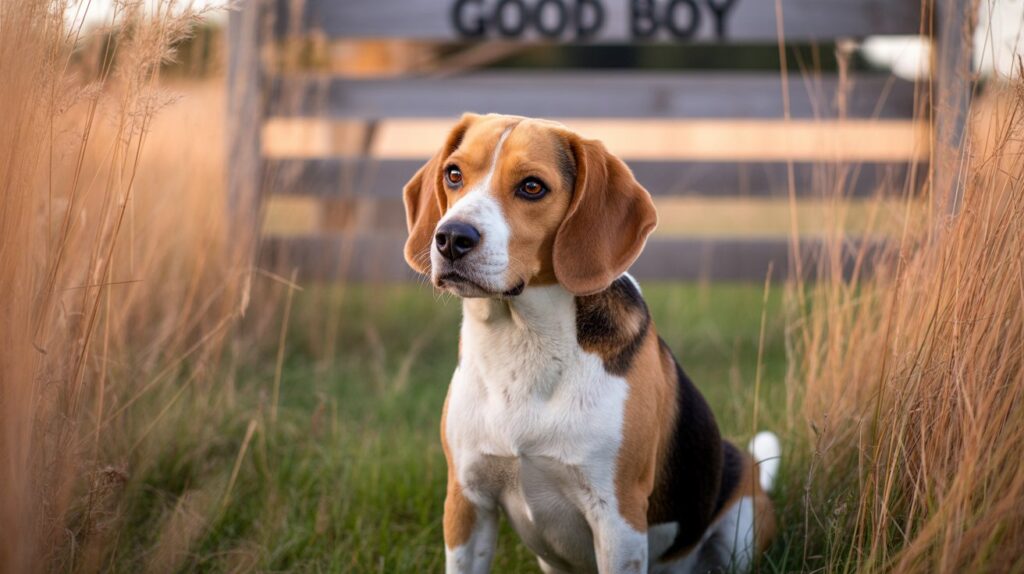Table of Contents
- Introduction: The Enduring Charm of the Beagle
- A Hunter’s Heritage: The History of the Beagle
- Physical Characteristics: More Than Just a Pretty Face
- Temperament and Personality: The Merry Hound’s Nature
- Health and Lifespan: Common Concerns for the Breed
- Care and Maintenance: Meeting Your Beagle’s Needs
- The Beagle as a Family Companion
- Conclusion: A Joyful but Demanding Companion
- Frequently Asked Questions (FAQs)
Beagle Dog Breed: A Comprehensive Guide to the Merry Hound
Introduction: The Enduring Charm of the Beagle
Instantly recognizable by their long, floppy ears, soulful eyes, and perpetually wagging tail, the Beagle is one of the world’s most beloved dog breeds. Originally bred for hunting, this small to medium-sized scent hound has seamlessly transitioned into the role of a cherished family companion. Their cheerful disposition and compact size make them an appealing choice for many, but beneath that adorable exterior lies a determined hunter’s spirit. This guide offers a deep dive into the Beagle’s world, exploring their history, temperament, and the specific care they require to thrive.

A Hunter’s Heritage: The History of the Beagle
The Beagle’s lineage can be traced back to ancient Greece, but the breed we know today was primarily developed in Great Britain around the 1830s. Their name is thought to derive from the French word begueule, meaning “gaped throat,” a likely reference to their distinctive baying howl.
These hounds were bred to hunt in packs, tracking small game like rabbits and hares by scent. Their small size allowed them to be followed on foot, making hunting accessible to those who couldn’t afford to stable a horse. This pack-oriented background is crucial to understanding their modern temperament; they are social animals that thrive on companionship, whether with humans or other dogs. The breed was officially recognized by the American Kennel Club (AKC) in 1885 and has remained a consistent favorite in homes across the globe ever since.
Physical Characteristics: More Than Just a Pretty Face
The Beagle’s appearance is perfectly suited to its original purpose. Every feature, from its nose to its tail, serves a function.
Size and Stature
Beagles are sturdy, solid hounds that come in two primary size varieties recognized by kennel clubs:
- 13-inch variety: For hounds not exceeding 13 inches in height at the shoulder.
- 15-inch variety: For hounds standing between 13 and 15 inches tall at the shoulder.
Typically, a healthy adult Beagle weighs between 20 and 30 pounds (9 to 13.5 kg), giving them a compact but robust build.
Coat and Colours
They possess a short, dense, and weather-resistant double coat that requires minimal grooming. While the classic tricolour (black, tan, and white) is the most famous combination, Beagles come in a wide array of colours, including:
- Red and White
- Lemon and White
- Chocolate Tri
- Blue Tri
Distinctive Features
- Ears: Their long, velvety ears are not just for show. They help to trap scent particles and funnel them towards the nose, enhancing their tracking ability.
- Eyes: Large, soft, and expressive, their brown or hazel eyes convey a gentle and pleading expression that owners find hard to resist.
- Tail: The Beagle’s tail is carried high and is almost always tipped in white. This “flag” was bred to be easily visible to hunters when the dog was tracking through tall grass.
Temperament and Personality: The Merry Hound’s Nature
The Beagle’s personality is often described with one word: merry. They are happy-go-lucky, funny, and amiable dogs. Their sociable nature, a remnant of their pack-hunting days, means they generally get along wonderfully with children and other dogs.
However, prospective owners must understand their other core trait: they are ruled by their nose. A Beagle’s sense of smell is incredibly powerful, second only to the Bloodhound. When they catch an interesting scent, their selective hearing kicks in, and they can become single-minded in their pursuit, ignoring commands. This same intelligence also lends them a stubborn streak, making them clever problem-solvers, especially if the problem is how to get to a snack.
Health and Lifespan: Common Concerns for the Breed
Beagles are generally a healthy breed with an average lifespan of 10 to 15 years. However, like all purebreds, they are prone to certain genetic health conditions. Responsible breeders will screen their stock for these issues. Key concerns include:
- Obesity: Beagles love food and are masters at convincing you they need more. Obesity can lead to serious secondary problems, so strict diet management is essential.
- Ear Infections: Their long, closed ears can trap moisture and debris, creating a perfect environment for bacterial and yeast infections. Regular cleaning is a must.
- Epilepsy: A neurological condition that can cause seizures. It is often manageable with medication.
- Hip Dysplasia: A malformation of the hip joint that can cause arthritis and pain.
- Hypothyroidism: A condition where the thyroid gland doesn’t produce enough hormones, affecting metabolism.
Care and Maintenance: Meeting Your Beagle’s Needs
Caring for a Beagle involves meeting their high energy needs and working with their innate instincts.
Diet and Nutrition
Provide a high-quality dog food appropriate for their age and activity level. The most critical aspect of a Beagle’s diet is portion control. Their propensity for obesity cannot be overstated. Avoid free-feeding and be mindful of treats, which should be given in moderation as part of a training regimen.
Exercise Requirements
This is not a couch potato breed. A Beagle requires at least one hour of exercise per day. This should include brisk walks and opportunities to run in a securely fenced area. Because of their powerful scent drive, Beagles should never be trusted off-leash in an unfenced environment. Once they catch a scent, their recall training can vanish in an instant.
Grooming Essentials
Their short coat is low-maintenance, requiring only a weekly brushing to remove loose hair and dander. However, other grooming tasks are vital:
- Ear Cleaning: Check and clean their ears weekly to prevent infections.
- Nail Trimming: Trim nails regularly to prevent overgrowth and discomfort.
- Dental Care: Regular brushing helps prevent dental disease.
Training the Intelligent but Stubborn Beagle
Training a Beagle requires patience, consistency, and a good sense of humour. They are intelligent and eager to please, but their stubborn nature and distractibility present a challenge.
- Positive Reinforcement: They respond best to training methods that use treats and praise. Harsh methods are ineffective and can damage your bond.
- Early Socialization: Expose them to many different people, sights, and sounds from a young age.
- House-Training: Beagles can be difficult to house-train. Crate training and a consistent routine are your best tools for success.
- Recall: Perfecting the “come” command is a lifelong project. Practice frequently in a safe, controlled environment.
The Beagle as a Family Companion
The Beagle can be an outstanding family pet, but they aren’t the right fit for everyone.
They are an excellent choice for:
- Active families with children.
- Households with other dogs.
- Owners with a securely fenced yard.
- People who appreciate a dog with a big personality and a playful spirit.
They may not be the best choice for:
- Sedentary individuals or families.
- Apartment dwellers who are sensitive to noise (their bay can be loud).
- Households with cats or small pets (their prey drive can be an issue).
- First-time owners who are not prepared for a challenging training experience.
Conclusion: A Joyful but Demanding Companion
The Beagle is a true delight—a bundle of energy, curiosity, and affection packed into a small, sturdy frame. Their merry nature brings laughter and joy to a home. However, their charm comes with responsibility. A happy Beagle is one whose needs for exercise, mental stimulation, and companionship are met. They require a dedicated owner who can manage their scent-driven instincts and appreciate their independent mind. For the right family, the love and loyalty of a Beagle is a reward unlike any other.
Frequently Asked Questions (FAQs)
1. Do Beagles bark a lot? Beagles are not typically “yappy,” but they are vocal. They have a distinctive three-part vocalization: a standard bark, a yodel-like bay (used when hunting), and a howl. They will often use their voice when excited, bored, or tracking a scent.
2. Are Beagles good for first-time dog owners? They can be, but it requires commitment. A first-time owner must be prepared for the challenges of training a stubborn and scent-driven breed. Patience is the key virtue.
3. Can Beagles be left alone for long periods? Beagles are pack animals and can be prone to separation anxiety if left alone for too long. This can result in destructive behaviour and howling. They do best in a home where someone is around for much of the day.
4. Are Beagles easy to house-train? They are notoriously difficult to house-train compared to other breeds. Their stubbornness and tendency to get distracted by smells can derail the process. Consistency and crate training are essential for success.
5. Do Beagles shed a lot? They have a dense double coat and shed moderately year-round, with heavier shedding periods in the spring. A weekly brushing is usually sufficient to manage it.
